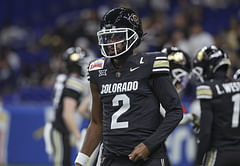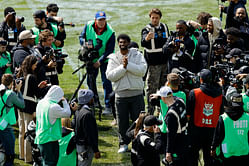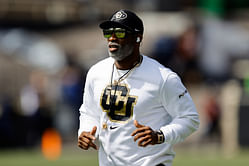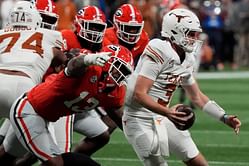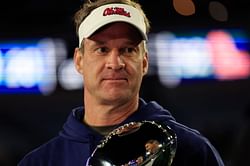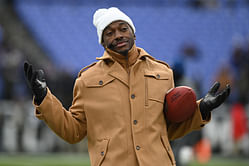
College football is one of the most popular sports in America. Millions of people tune in to watch their favorite teams battle it out on the field every season. But there's one tradition that has puzzled many fans - why don't college football players tuck in their jerseys? In this blog post, we will explore the reasons behind this unique tradition and uncover some interesting facts about college football jerseys.
Why College Football Players Not Tuck in Their Jerseys?
The tradition of leaving football jerseys untucked dates back to the early days of the sport when players wore heavy woolen jerseys that were uncomfortable to wear. These jerseys would become drenched in sweat, making it difficult for players to move around freely. To avoid this problem, players started wearing their jerseys untucked, allowing for better air circulation and greater freedom of movement.
Another reason why college football players don't tuck in their jerseys is because of the intimidation factor. The NCAA eventually banned them. An untucked jersey makes a player appear larger and more imposing, making it difficult for the opposing team to tackle them. This is especially true for running backs and wide receivers who need to be quick and agile on the field.
Can Football Players Wear Crop Top Jerseys?
No, football players are not allowed to wear crop-top jerseys. The National Collegiate Athletic Association (NCAA) has specific guidelines in place for the size and positioning of a player's jersey. According to these guidelines, the jersey must cover the player's stomach and back down to the waistband of their pants. Any alteration to the uniform that does not comply with the NCAA guidelines can result in penalties. Therefore, players are not allowed to wear crop top jerseys.
The NCAA recently announced, via NCAA.org's Greg Johnson, that college football players will no longer be able to wear crop-top jerseys on the field during games:
“Officials will treat illegal equipment issues—such as jerseys tucked under the shoulder pads or exposed back pads—by making the player leave the field for at least one play. The equipment must be corrected for the player to return to the game. The player may remain in the game if his team takes a timeout to correct the equipment issue.”
In other words, if you tuck your jersey up, you won't be allowed on the field.
Guidelines for Wearing College Football Jerseys
While there is no official rule that states that college football players must leave their jerseys untucked, there are guidelines that dictate how a player's uniform should look. According to NCAA regulations, a player's jersey must be tucked in at the start of the game and at the end of each quarter. However, during the game, the jersey may be untucked as long as it does not obscure the player's name or number.
The NCAA also has guidelines for the size and positioning of a player's name and number on their jersey. These guidelines are in place to ensure that all players are easily identifiable on the field.
Conclusion
In conclusion, the tradition of leaving football jerseys untucked in college football dates back to the early days of the sport when heavy woolen jerseys were the norm. While the jerseys have evolved over time, the tradition of leaving them untucked has remained. Whether it's for better air circulation, intimidation, or simply tradition, untucked jerseys have become a staple of college football. They will likely continue to be so for many years to come.
It's important to note that while there are guidelines in place for how a player's uniform should look, there is still a lot of room for individuality and personal style. Players can choose to wear different types of cleats, gloves, and even undershirts to express their unique personalities on the field. So while the tradition of untucked jerseys may seem odd to some, it's just one of the many ways that college football players make the game their own.
FAQs
A: The tradition of leaving football jerseys untucked dates back to the early days of the sport, when players wore heavy woolen jerseys that were uncomfortable to wear.
A: While there is no official rule against rolling up a football jersey, it is generally not done in college football.
A: Some players may choose to roll up their sleeves or push their jerseys up slightly for personal preference, but it's not a common practice.
A: According to NCAA regulations, a player's jersey must be tucked in at the start of the game and at the end of each quarter. However, during the game, the jersey may be untucked as long as it does not obscure the player's name or number.
A: Yes, players can choose to wear different types of cleats, gloves, and even undershirts to express their unique personalities on the field.
